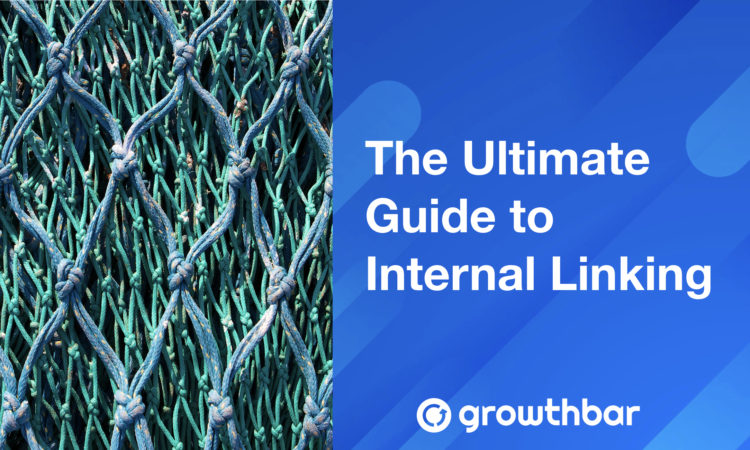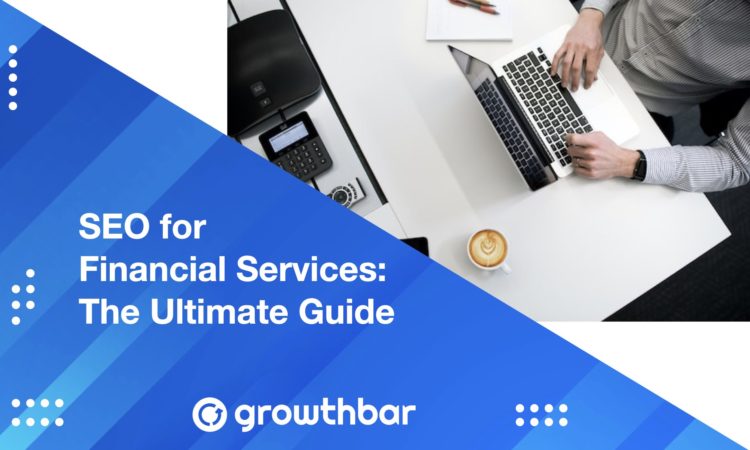- How to Get Internal Linking for SEO Right - November 16, 2022
- How to Scale Content Creation - May 30, 2022
Ended soon
Internal linking is a key factor in the success of your website’s SEO.
Think of internal links as a web — a web that leads customers (and Google) through your website from homepage, to blog posts, to product pages, and back again.
The way you link, the text you utilize to frame that link, and the location of a link on the page all help create a web of internal links on your site… links that will tell Google what’s important and what’s not.
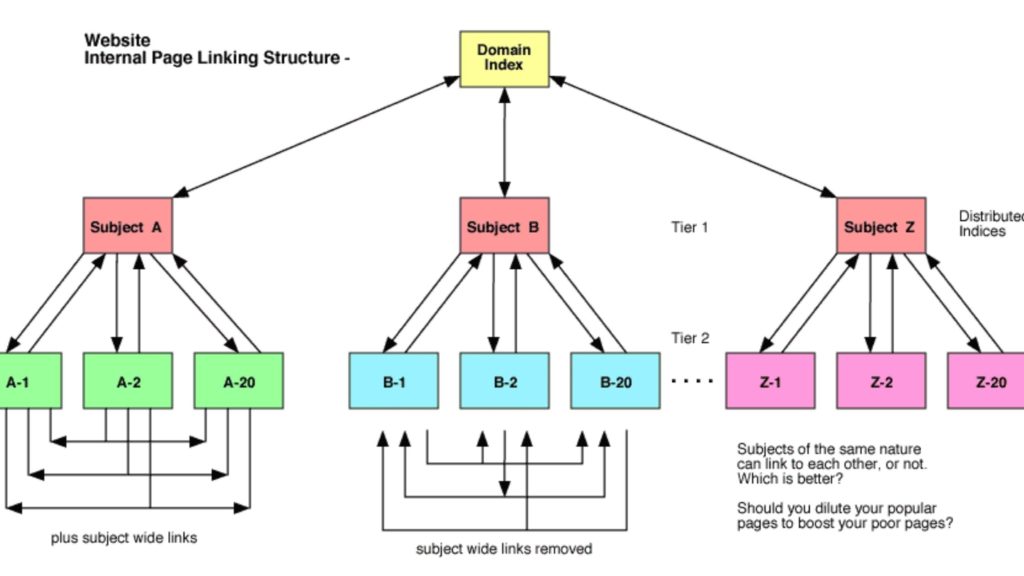
This guide will deep dive into how to get internal linking for SEO right.
Plus, why it matters and tricks to make it easier along the way.
Table of Contents
What are internal links?
Internal links are hyperlinks placed on your website that lead to other pages on your site. In the case of internal links, the source domain is the same as the target domain.
Common types of internal links on websites include:
- Links in the navigation/menu bar to important pages on your site
- Links from one blog post to another
- Links to “related products” on product pages or “related posts” on blog post pages

Internal Links vs. External Links
External links are, by contrast, links in which the source domain is different than the target. They are links that will take a user off of your site.
External links are definitely important for SEO as well. They show Google that you care about quality and that you’re producing fair and balanced content.
Why are internal links so important to Google?
So, why are internal links so important for SEO?
The theory behind why internal links matter is quite simple: Internal links provide a clear path for crawlers. They also help prolong a user’s journey on your site by leading them to new page paths, which in turn signals to Google that the user is satisfied with the content you are providing.
Internal links:
- Help with website navigation by giving users cues on where they might find more information on a given topic. Also read: What is UX/UI and Why’s it Important for SEO?
- Define the website architecture and hierarchy by highlighting which pages are most important via their link frequency and prominence.
- Distribute ranking power through the site by, again, signaling importance of a linked page.
Now that you’re sold on why internal links are important, let’s take a look at how to implement a successful linking strategy — as fast as possible.
Also read: What is the Value of SEO?
Types of Internal Links
Every website that has more than a single page should be connecting every page via internal linking. There are three key types of internal links to consider when developing an internal linking strategy. Those are:
- Navigation
- Breadcrumbs
- In-line links
Here’s how to successfully implement each type.
Navigation
Think about this: Have you ever seen a website without a main menu?
Consider your website’s homepage. In the navigation bar, you probably have a menu that leads users to other key pages. These might be your Shop page, your About Us page, or your Contact Us page.
These are core internal links because they are visible on every page a user will visit on your website. They are there to make a user’s journey as straightforward as possible. They’re the lowest-hanging fruit in terms of starting your internal linking strategy.
In tandem, because of their frequency and visibility, they delineate to Google what the overarching structure of your website is.

Breadcrumbs
Breadcrumb links are typically a facet of content.
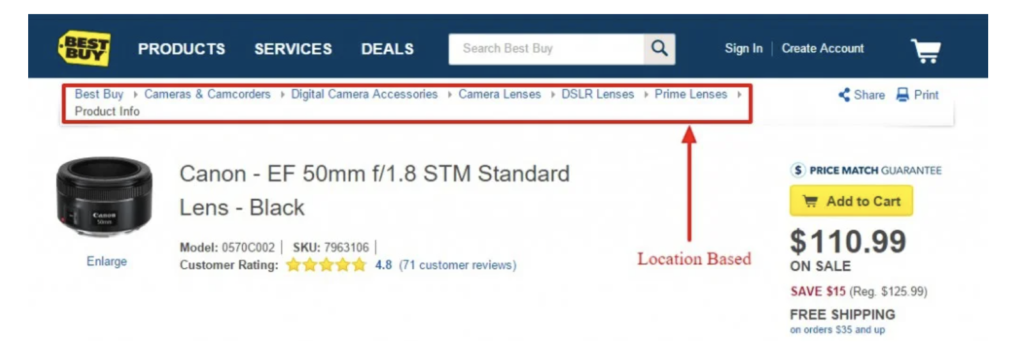
They help demonstrate to the user how they got to a particular page, and provide a clear path of categorization to help the user understand where this particular page falls in the broader categorization of the site.
In my line of work, for example, we’re often writing health content to answer questions about a particular illness. Say we wanted to write an article titled “Best Antibiotics for a UTI.” The breadcrumbs might look as follows:
Home > Urinary Tract Infection > Treatment > Best Antibiotics for a UTI
Each of the above would link to the “parent page” of that particular topic. This is hugely important, because it helps Google sort out the hierarchy of your site down to the individual page.
This isn’t feasible in the Navigation links, because having every single page on your site listed in the navigation might confuse the user. So the breadcrumbs help bridge the gap, providing a sort of “mini-nav” for the user and Google to utilize.
In-line links (Contextual Links)
In-line or contextual links are, as they sound, links that are found within the body copy of your website content. This means links that are not in the header, footer, or breadcrumbs. The most common way to do in-line links is through your content. Allow me to explain:
If you are reading this article, you likely know that the hallmark of a successful SEO program is good content. Your website’s content should focus on whatever topic is relevant to your business or industry.
In-line links in your content will link to, yes, you guessed it, other pieces of content. For example, you might have this sentence in the formerly referenced UTI article:
“The best antibiotic for UTI treatment depends on your specific type of infection.”
Now, an effective internal link in this sentence might be in the anchor text “UTI treatment,” and link out to an article on the broader topic of UTI treatment.
Note how specific the anchor text is in relation to the topic it is leading the user to. This is important. Anchor text signifies to the user (and to Google) what the link will guide them to, so you must make sure it is specific and descriptive when selecting anchor text.
Hint: Don’t link to contextually irrelevant pages on your site. In other words, Google will simply ignore internal links that aren’t very good. So step up your game and be thoughtful about where your internal links are most appropriate.
How to Choose the Best Anchor Text
The anchor text signals to your user (and to Google) where this link will take them, and what topic they should expect to be on the page if they click. As noted above, the specificity of your anchor text is very important.
Using specific, descriptive anchor text can improve the value of the link by adding keywords and content to it.
Still, this doesn’t mean you should keyword stuff. Be reasonable in your descriptions. If it seems like it doesn’t work in the sentence, you should probably edit it down. The best anchor text flows naturally with the rest of the content and provides a clear description of what the user can expect when they click.
If you are building out a large content program, internal links can get messy as your library grows. Let’s take a look at some of the most common linking issues that might arise, and some potential solutions.
How to Implement an Internal Link Strategy
Here’s a step-by-step outline of how to make sure you get interlinking right on your website.
1. Identify your pillar pages (also called “hub” pages)
Think of pillar pages as your high-level umbrella pages. Pillar pages typically target the broad keyword terms that have high search volumes (not, alternatively, long-tail, specific keywords that receive fewer searches per month).
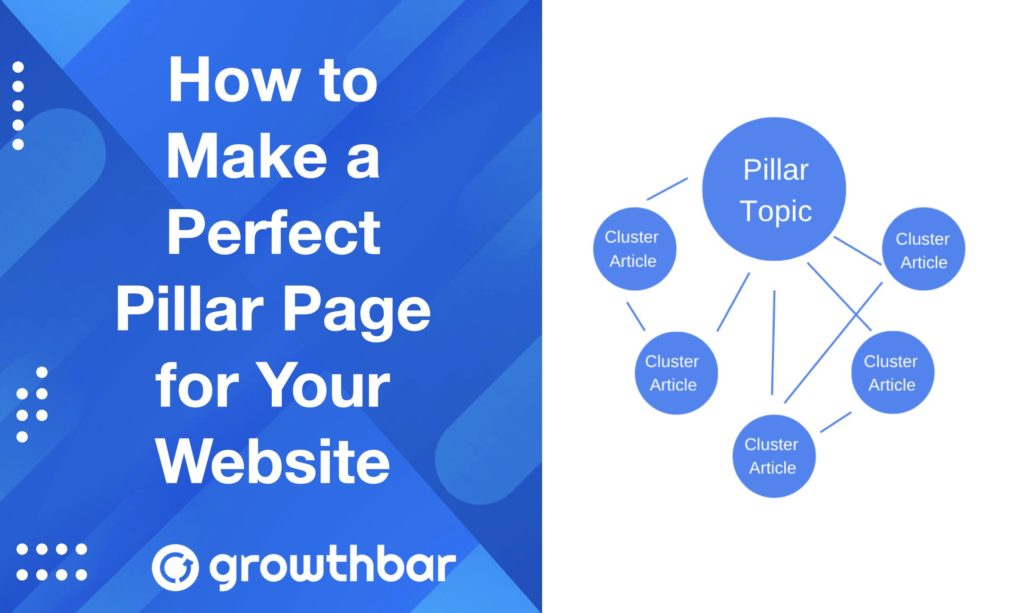
These pages often drive the most valuable traffic to your site because they are targeting such broad, hard-hitting terms.
To go with our former example, the page we identified “Best Antibiotics for UTI” is not a hub page. The hub page in this given category would likely be something like “What is a UTI? Signs, Symptoms, Treatments and More.”
Notice how the hub page covers a lot of general surface area, without getting into the specifics.
A good way to figure out whether it is a hub page or not is to look at the target keyword: is it a specific, long-tail keyword? If yes, it’s not a hub page. If no, you might have found your winner.
2. Create topic clusters using internal links
Once you have your defined hub pages, it’s time to identify all of those long-tail terms that require content as well.
Each page you generate to answer a long-tail query should ladder up to one of the hub topics.
When you have a group of long-tail queries filed under a given hub topic, you’ve generated what SEOs call a “topic cluster.” Congrats!
Now, this is where internal linking is important. To signify the existence of the cluster, you’ll want to make sure that all of the pages are linking together in an appropriate manner.
All of your long-tail targeting pages should link back to the hub page, and the hub page should link to those long-tail pages wherever possible.
A great way to do this is to keep track of the hubs and their supporting pages in a spreadsheet. That way, whenever you publish a new page you can go through the list and ensure linking has been implemented properly.
3. Add an appropriate number of links to each page
A good rule of thumb is for every new piece of content, you should be adding five or so links to older pieces of content (appropriately, of course – more on that below). This is very important because it signals the relevance of your older pages to this newer page, showing Google that the pages linked to are just as relevant as ever.
Some folks call this the “freshness value.” Apparently, Google uses it as part of their ranking algorithm.
Linking to older pages will help them rank better, as well as help the newer page rank.
When you’re implementing your linking strategy, be sure not to overdo it. “Link stuffing” is a big no-no in SEO. If your site gets flagged for it, you could be penalized and see big drops in your rankings. Plus, it’s not a great user experience to have to wade through tons of links when reading an article.
Long and short of it is: use your judgment, incorporate links where reasonable, and don’t do anything wacky.
4. Update older articles as you publish new ones
Just as you want to link to older articles from your new content, you want to make sure that those older articles are linking to your new content as well. This helps create a linking “web” of sorts that Google can easily crawl and understand.
When you update older content, Google crawls it again. This improves your chances of ranking.
Updates should be done thoughtfully. I recommend doing the following to make sure you are being effective:
- Add a new paragraph at the beginning of your article explaining what has been updated.
- Add information throughout to facilitate the new links (don’t just drop them all over for the sake of it)
- Remove any outdated stats or information that is present.
This helps signal to google that you are committed to the longevity of your content.
Also read: How Often Should I Post on My Blog? or What is a Google Crawler?
5. Only add do-follow links
Don’t add the no-follow tag to any of the internal links you add to your content. This signals to Google that the link is irrelevant, negating any value the link might offer.
A good way to make sure your links are do-follow is to run a crawl on your website using the SEO tool of your choosing (use an SEO audit tool or try some other Semrush-like tool). This can identify where internal links that are no-follow (or broken) live so that you can go into your CMS and fix them.
Quick Tips for Expediting Internal Linking
Interlinking is a long, tedious process, especially when your content library is growing quickly. If you have multiple people at different stages of your content development, it can feel impossible to keep track of where the links are. It might be too out of hand to keep track of. I’ve tried a lot of different things to help solve for this in the past. Here are the things that worked for me.
Outsource to a Linking Expert at a Regular Cadence
One way to ensure you get all of your links allocated properly is to assign a single person to that job. In the past, I’ve hired someone every time I’ve finished a cluster of content on a given topic.
You can send them the full list of articles and have them comb through each individual piece, linking where relevant and useful.
Have the person keep track of the links they add to each piece so that you have a record. Then, when you finish another cluster, repeat the process. This way you can be sure that you are capitalizing on every link opportunity.
Take a look at the best SEO agencies in the world if you’re interested in some professional help!
Automate Those Links
My personal favorite way to ensure linking is done properly is to automate it with an SEO tool. GrowthBar is a great one for this. Here’s how it works:
When you are creating an outline for a piece of content, the tool automatically scans your website and identifies any internal links that might be relevant to the piece. You (or your freelancer) can select all of the links that they want included. Then, the writer can write the piece with this in mind, including all of the relevant links needed to support your internal linking strategy.
WordPress actually naturally populates internal link suggestions.
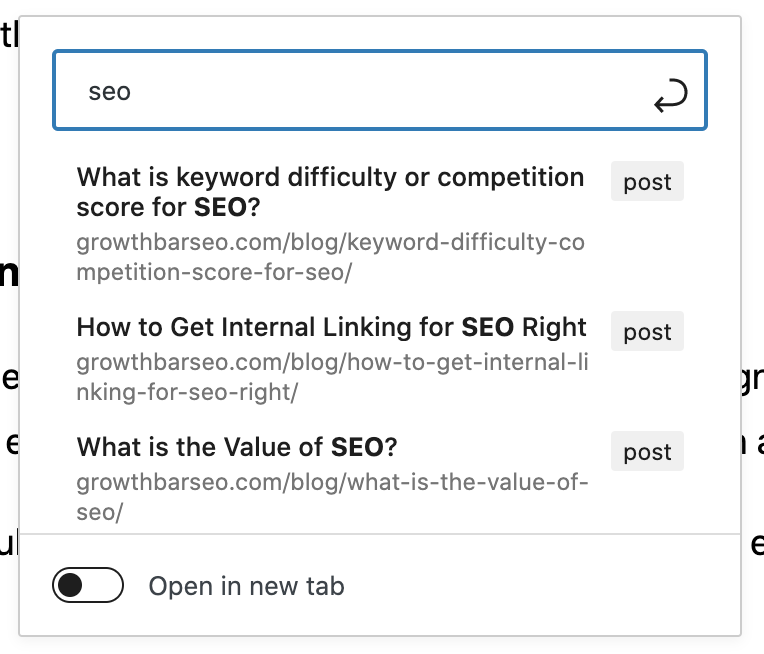
Another way to automate internal linking is with code. If you or someone you know can write a little code, you can automatically insert links in various places on your site — perhaps below every blog post or in calls-to-action within the content.
There are some internal linking WordPress plugins that help take care of this too.
Conclusion
Internal linking can be a pain. It is a detail-oriented, time-consuming task. But it’s worth it.
It will make all of the difference in the success of your SEO strategy. As discussed above, my advice is to take it seriously from the beginning and make sure to outsource/automate the task wherever you can so that you can be certain your strategy is implemented to the best possible degree. It’s much easier to start internal link building from day one, rather than have to go back and have to focus on it later.
Remember to start with the most impactful links:
- Ones in your main menu
- Ones that bring together important clusters of pages
- And ones you can automate with code or plugins, which eliminates manual work

